
Salty Sam’s Fun Blog for Children
Number 210
The Severn Bore
Hello Everyone

Sandy Cove is the tourist beach next to Rocky Bay. Lots of people go there to swim in the water in the summer, but when the water is rough – at any time of the year, you can find people there surfing or trying to learn how to surf.
We saw some surfers this week when we went for a walk on the beach. The weather has been quite nice this half term holiday in Rocky Bay.
Bill and Bob want to try to learn surfing when they are a bit older. lt is quite difficult to do and requires really good balance. You have to be able to swim as well of course, because even the best of surfers can be knocked off their board.
You might think of the beaches of Hawaii when you think of people surfing – or even the north coast of Cornwall, where it is a very popular sport.
But did you know that there is a special place where people can go surfing and they can stand up on their boards and surf continuously for several miles – and maybe for about an hour without falling off their board once?
Wow!
This one special wave has a special name. lt is called the Severn Bore.
lt is a wave created on a river in the south-west of England. The River is called the Severn and the wave is created by an incoming tide.
The wave is so spectacular that when the Romans first saw it they thought the end of the world had come.
Any ancient wise folk who could foretell its arrival were revered (admired) for their amazing wisdom – but actually it could be predicted by anyone who studied the patterns of tidal flows.
A maximum bore will occur one to three days after a New or Full Moon.
ln this part of the world, when the tide comes in, instead of it gently moving up the beach; it is funnelled up the mouth of the river. The force in the flow of water is so great that the water is compressed (squashed), and in a way, trips over itself, creating the wave. The narrower the river becomes the higher the wave rises.
The tidal difference in this place is enormous, hence the weight of water travelling up the river. lt is the second highest tide in the world after the Bay of Fundy in Canada.
lt is up to 15 metres – and more!
Surfers positioned and waiting for its arrival can ride a wave that travels for 31 kilometres at 20 kph and will rise up to 3 metres high!
lt is so noisy you can hear it coming.
There will be a boat to pick the surfers up if they fall off and take them back in front of the wave so that they can have another go at surfing on the large wave at the front of the bore.
There will be one or two smaller waves travelling behind the main one at the front.
There is also a lot of debris that is caught up in the strong flow of water like branches and logs, so the surfers have to be careful and watch out for it.
Some surfers like to put a video camera on their boards and film themselves at this fantastic event.
Maybe one day they will build barrages to harness the power of the wave in order to create electricity – power from a natural source.
Bye bye everyone – don’t forget to subscribe to my blog!
lf you like my blog, please support it by telling all your friends and followers about it.
Thank you!
And see you again next Fun Friday!
Love and kisses
Salty Sam

www.christina-sinclair.com


Bill and Bob’s Joke of the Week![]()
![]()
Bob: What can’t walk but can run?
Bill: l don’t know. What can’t walk but can run?
Bob: A river!

Salty Sam © Christina Sinclair 2015
Unauthorized use and/or duplication of material from this blog without express and written permission from this blog’s author and owner is strictly prohibited.
Links may be used to www.christina-sinclair.com

Picture Gallery
 Riding the Bore
Riding the Bore


 THE SALTY SAM NEWS DESK
THE SALTY SAM NEWS DESK

Bill, Bob Emily and Henry went for a walk in the park this week and took some photographs of some trees that are dormant. The word dormant means asleep.
You may recognize some trees by the shape of their leaves – but can you recognize them by the shape of their branches too? When you look closely, you can see that they can be quite different.
Some trees have very distinctive shapes that make them very easy to recognize at any time of the year.
Each tree spreads its branches out so that the leaves on them can have a good chance to get as much light as possible. The leaves all make food from the tree from the sunlight.
This process is called photosynthesis.
So have a look at their pictures and see what you think…
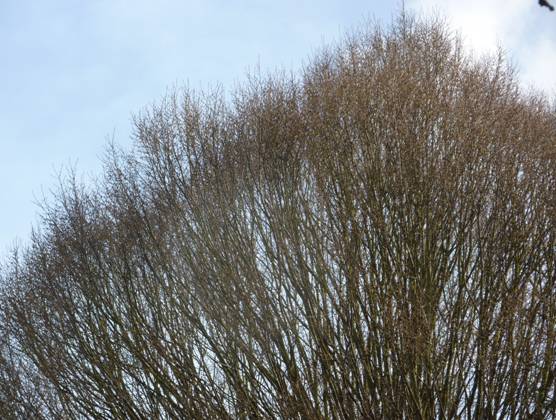
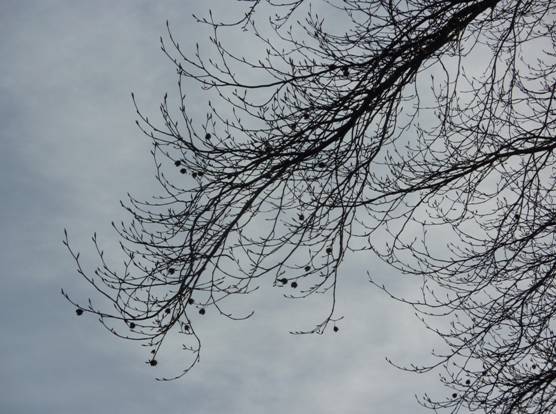
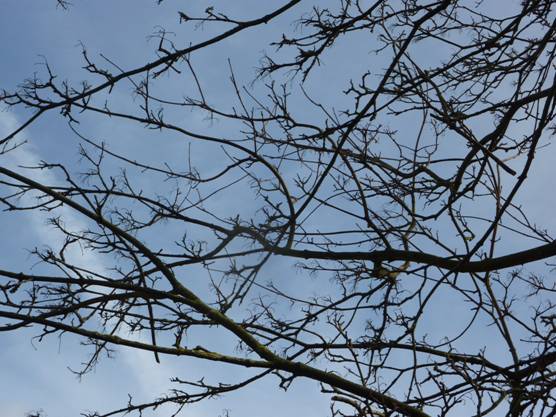

*********************
TO ADVERTISE ON THIS BLOG
PLEASE CONTACT:
christina.sinclair.ads@aol.co.uk
*********************


Quick Quiz
Unmuddle these letters to find some famous rivers…
- ihetsaims
- enudab
- anazom
- lien
- herin




lt’s the Weekend!
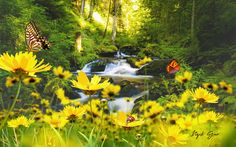
HOW TO MAKE A PLASTlC CANVAS KNlTTlNG BAG
If you have been given a knitting set and the box it came in is now falling to pieces, this bag is perfect for keeping needles and some small balls of yarn in.
There are different ways in which you can cover the surface with stitches.
You can use rainbow yarn and work your way backwards and forwards from the bottom upwards in a horizontal fashion. Or you could work from one side to the other vertically. Or you could work diagonally to get an effect shown in the photograph as the yarn moves from peach through pink to mauve.
If you use yarn that has gradually changing colour, the final effect will be very subtle. A vibrant rainbow yarn with lots of contrasting colours will create an entirely different result.
Or you could create horizontal, vertical or diagonal stripes or panels instead.
Make sure that you work neatly so that there are not too many knots and bumps at the back.
There will be some accessories to make for your bag in next week’s post.
You will need 3 sheets of plastic canvas 7 mesh
10.5 inches x 13.5 inches/26.7cm x 34.3cm
Cut panels as follows:-
Front 43 holes across by 49 holes down
Back 43 holes across by 49 holes down
Base 43 holes by 20 holes
2 side panels 20 holes by 49 holes
2 handles 44 holes by 5 holes
100g dk yarn
Make your cutting lines out with scraps of yarn before you cut any panels at all to see how the panels will be cut from your sheets of plastic canvas and also to allow you to double and triple check your counting.
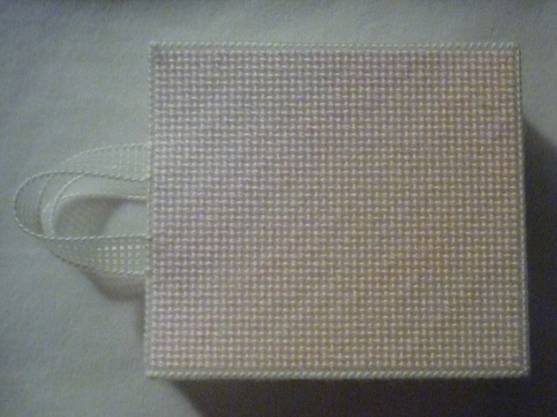
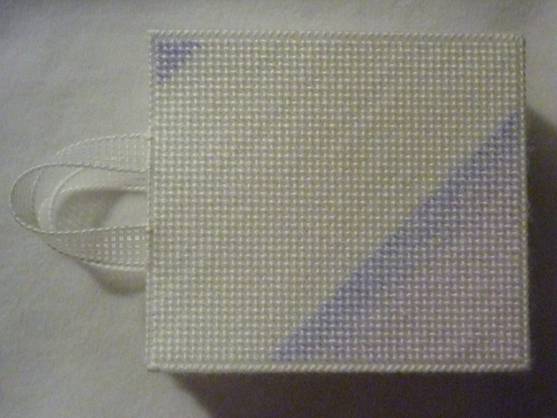
The rainbow yarn used has created the colouring on the bag
TO MAKE UP
Cover the surface of the canvas with tent stitch (shown in the photograph) or brick stitch
If you are using rainbow yarn, make sure that you always thread your tapestry needle with the end of the yarn you have just cut to make sure the colour runs the right way
Sew the bottom of the front, back and side panels to the base
Sew up the corners
Sew the base of the handles to the top of the bag – concentrate on this and make sure you line the handles up evenly – it helps to look at both sides of the canvas as you work
Cut some panels to line the bag – this will make the inside look neater and the bag much sturdier
Cut these panels after you have finished the outer bag because you don’t want to pick up the wrong panel of canvas to cover with canvas work stitches
Front 41 holes by 48 holes
Back 41 holes by 48 holes
Base 41 holes by 18 holes
2 sides 18 holes by 48 holes
Sew the bottom of the front, back and side panels to the base only using white yarn
Push the inner skin down inside the constructed knitting bag
Sew along the top rim of the bag – at each corner of every panel you will stitch into one thickness of canvas (in the outer bag) not two
Stitch around the outside of the handles
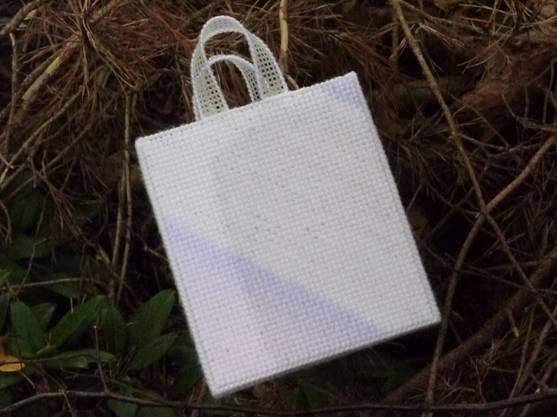
Please note that the material on this blog is for personal use and for use in classrooms only.
It is a copyright infringement and, therefore, illegal under international law to sell items made with these patterns.
Use of the toys and projects is at your own risk.
©Christina Sinclair Designs 2015

Answers to the News Desk Quiz
The first picture is of a hornbeam – their branches grow very closely together and the whole tree has a very rounded top.
The second is of a beech – if you look closely their branches have almost a zigzag shape to them.
The third is of a maple – you can see all the whiskers left from when the maple seeds blew away last autumn.



Quick Quiz Answers
- Thamesisis – ihetsaims
- Danube – enudab
- Amazon – anazom
- Nile – lien
- Rhine – herin
See if you can find these rivers in your atlas…

The Nile



Valuable information. Lucky me I found your web site by accident, and I am shocked why this accident did not happened earlier! I bookmarked it.
l’ll see you again soon then H. Thanks for writing in. 🙂
I like this…Great to read, but I don’t know where to go next. Which of your posts would you recommend I read next?
l would recommend you start reading my blog at blog post 1 and work your way from page to page using the red button at the bottom. 🙂
l am glad you like my website. Thank you for writing in.